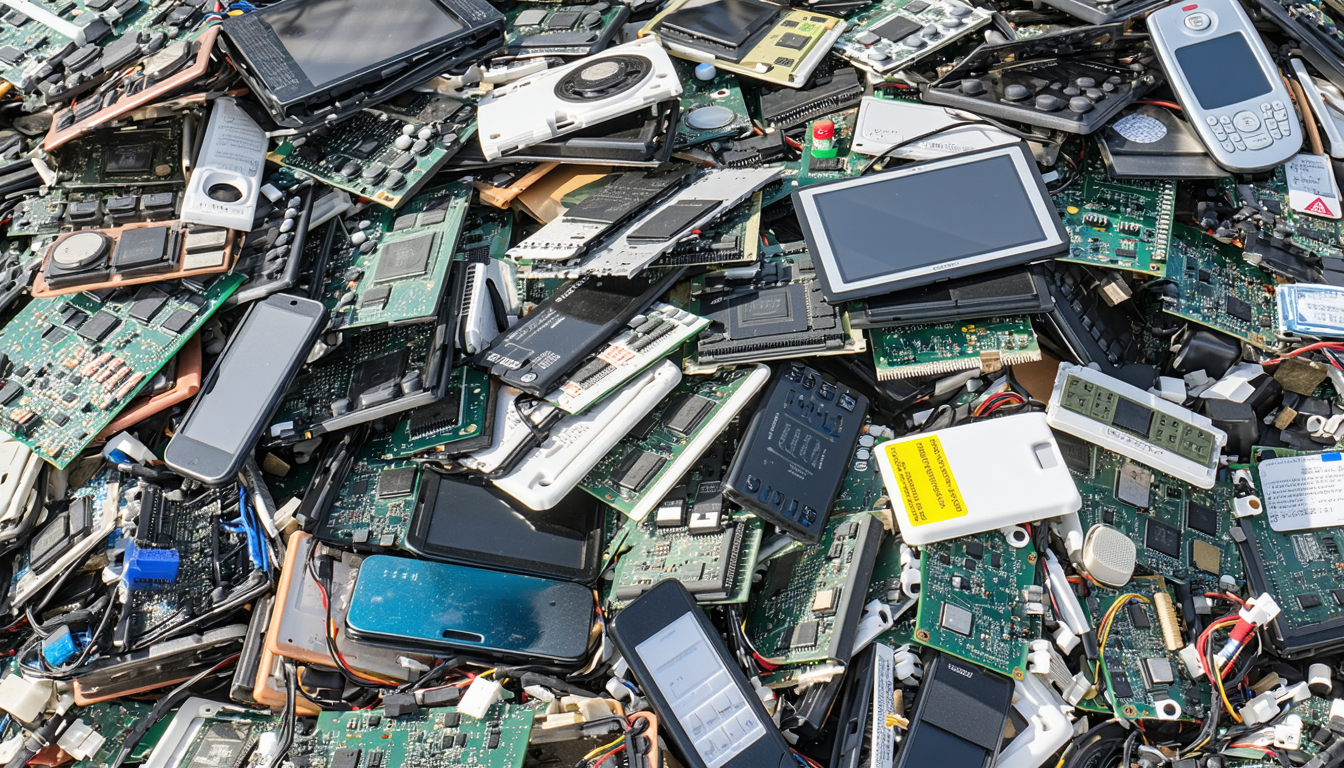Introduction
In the United States, electronic waste, or e-waste, is piling up at an alarming rate, and recent e waste pictures circulating online have brought this hidden crisis into sharp focus. These striking images showcase mountains of discarded smartphones, laptops, and other gadgets, painting a grim picture of a nation struggling to manage its tech trash. This article delves into the latest developments surrounding e-waste in the U.S., explores the significance of these viral visuals, and examines their impact on policy, industry, and the environment. What do these pictures tell us about the future of recycling?
The Growing E-Waste Problem in the U.S.
The United States generates over 6.9 million metric tons of e-waste annually, according to the Global E-Waste Monitor 2020, yet only about 15% of it is recycled properly. The rest often ends up in landfills or is shipped overseas under questionable conditions. Recent e waste pictures taken at processing facilities and illegal dump sites reveal the sheer scale of this issue. Images of crushed monitors and tangled cables highlight not just the volume but also the hazardous nature of improperly handled electronics, which can leak toxic substances like lead and mercury into the environment.
These visuals have sparked renewed public interest. Social media platforms are flooded with discussions about the need for better waste management systems. As more Americans upgrade their devices—often annually—the problem is only set to worsen without immediate action.
Why E Waste Pictures Are Sparking Outrage
A single photograph can sometimes speak louder than a thousand reports, and the latest batch of e-waste images has done just that. Pictures showing discarded electronics in rural American communities have raised concerns about environmental justice, as poorer areas often bear the brunt of illegal dumping. One viral image from a landfill in Texas captured a child playing near a pile of broken computers, igniting debates over health risks.
According to Dr. Emily Harper, an environmental scientist at the University of California, “These images are a wake-up call. They show us that e-waste isn’t just a technical problem—it’s a human one. We need stricter regulations to protect vulnerable communities.” Her statement reflects a growing consensus among experts that visual evidence can drive policy change.
Impact on Stakeholders and Industry Response
The circulation of these powerful images has put pressure on multiple stakeholders. Tech companies like Apple and Dell are facing scrutiny over their take-back programs and sustainability commitments. While some firms have pledged to use more recycled materials by 2030, critics argue that progress is too slow. Consumers, inspired by e waste pictures, are also demanding transparency about where their old devices end up.
State governments are stepping in as well. In 2023 alone, states like California and New York introduced bills to expand e-waste recycling programs and impose fines on non-compliant manufacturers. However, enforcement remains inconsistent across the country, leaving gaps that these haunting visuals continue to expose.
The Bigger Picture: Environmental and Economic Stakes
Beyond the immediate shock value of these images lies a deeper issue: the environmental cost of inaction. Improperly managed e-waste contributes to greenhouse gas emissions and resource depletion, as valuable materials like gold and copper go unrecovered. The U.S. Environmental Protection Agency (EPA) estimates that recycling one million laptops could save energy equivalent to powering over 3,500 homes for a year.
Economically, there’s potential for growth in the recycling sector. A 2022 study by the Institute of Scrap Recycling Industries suggests that better e-waste management could create thousands of jobs in processing and refurbishment. Yet, without public awareness—spurred by images like these—and federal support, such opportunities remain untapped.
Future Outlook: Can Visuals Drive Change?
The viral spread of e waste pictures could mark a turning point for how the U.S. handles electronic waste. On one hand, they’ve galvanized activists and policymakers to push for stronger laws. On the other, some industry leaders caution against overreacting to emotional imagery, arguing that systemic change requires time and investment rather than knee-jerk responses.
Looking ahead, experts predict that technology like AI-driven sorting systems could revolutionize recycling efficiency by 2030. But for now, these images serve as a stark reminder of the work left to do. Balancing innovation with accountability will be key to addressing this crisis.
Conclusion
E waste pictures have done more than shock—they’ve ignited a critical conversation about America’s recycling shortcomings. From exposing environmental hazards to pressuring tech giants and lawmakers, these visuals underscore the urgency of tackling electronic waste head-on. As the U.S. grapples with millions of tons of discarded devices each year, the path forward lies in stronger policies, consumer awareness, and industry innovation. These images may fade from social feeds, but their message must endure if real change is to take root.
Frequently Asked Questions (FAQs)
- What is e-waste?
E-waste refers to discarded electronic devices like phones, computers, and televisions that are no longer in use. - Why are e waste pictures important?
They visually highlight the scale of the electronic waste problem, raising awareness and prompting action from individuals and policymakers. - How much e-waste does the U.S. produce yearly?
The U.S. generates over 6.9 million metric tons of e-waste annually, with only a small fraction being recycled. - What can I do to reduce e-waste?
Recycle old devices through certified programs, buy durable products, and support companies with strong sustainability practices. - Are there health risks associated with e-waste?
Yes, improper handling can release toxic substances like lead and mercury, posing risks to human health and the environment.



